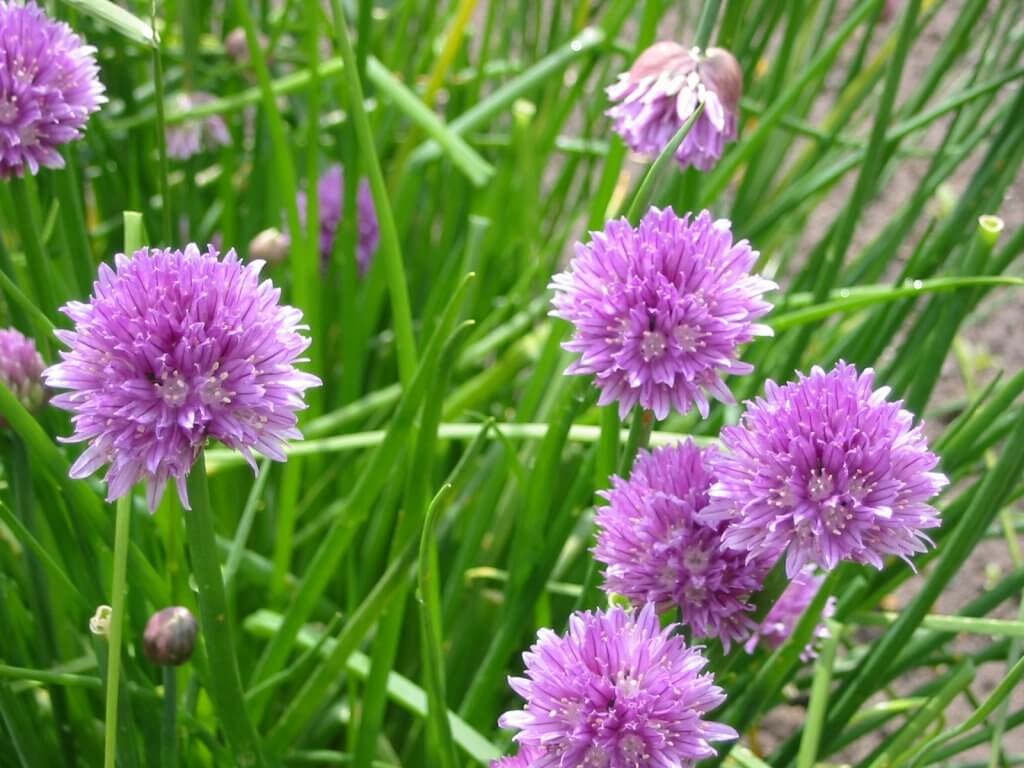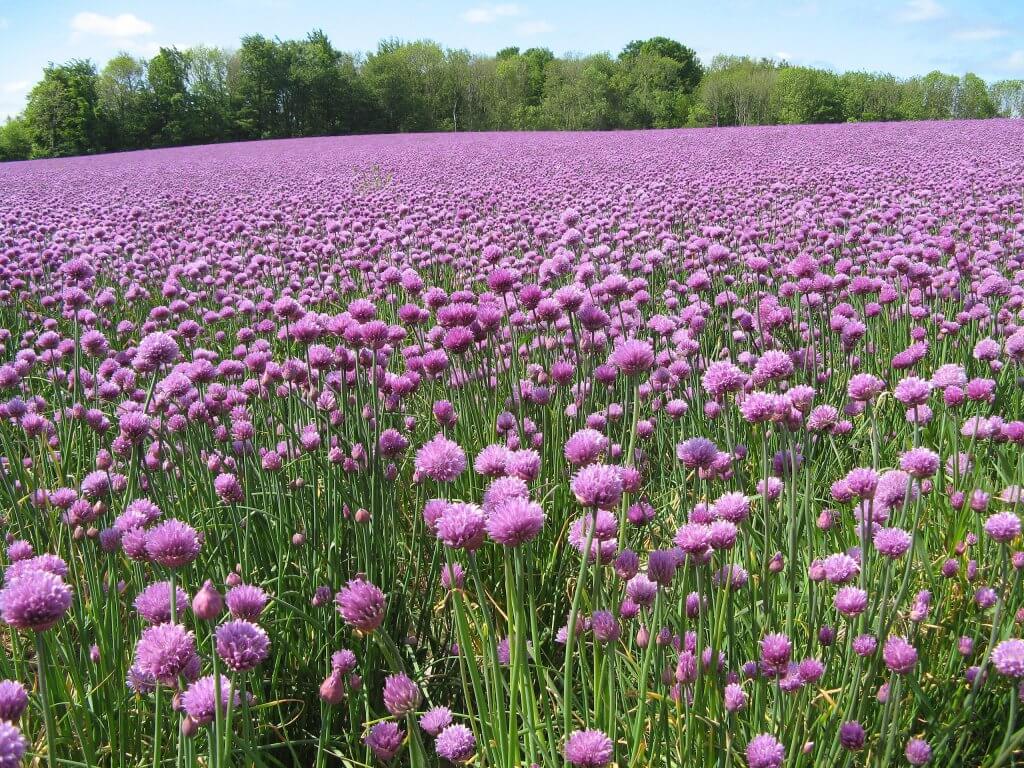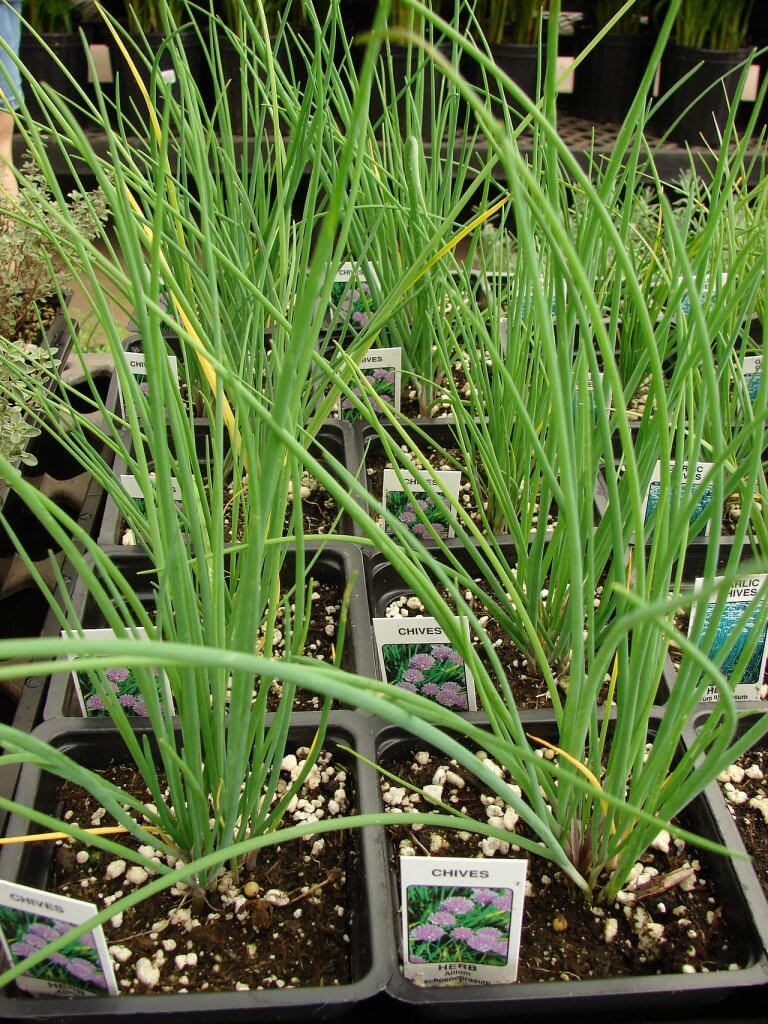Chives (Allium schoenoprasum) are a perennially growing herb. Originally native to most of Europe and parts of Asia. You can now find them growing wild in many parts of the world. Seeds and plants were transported across countries for their culinary and medicinal value. They have a deliciously mild onion like flavor, with their closest relatives being garlic, leeks and shallots.
The plants are bulb forming, and will grow to an approximate height of 40cm. The stems are very narrow and hollow at roughly 3mm in diameter. The clusters of stems largely resemble grass. Small and delicate looking light purple flowers emerge from the stems when flowering from April to June.

Cultivation and History of Chives
Chives are easy to grow; To really thrive they will do well with a little watering and compost. However they do not require any additional care. Plant them in well drained soil with access to full sunlight throughout the day. If you live in a colder climate, chives will die back during the winter, returning again in the spring.
They can be grown from seed indoors and transplanted to the garden in kept inside. If growing from seed, place the seed tray within a dark area between 60 to 70 Fahrenheit. As the seedlings begin to appear, move the tray into the sunlight. At approximately 5-6 inches, the seedlings are ready to be transplanted into the garden.
As well as a herb garden, you can also plant chives in a window box or small container. Whether indoors or outdoors, make sure to replace the soil every few years to keep the nutrient supply fresh. To ensure a constant supply of leaves, trim away any forming flower heads. This will ensure the energy of the plant focuses on producing extra leaves.
Since the middle ages, chives have been cultivated throughout Europe. They were eaten as a source of food, as well as grown for medicinal purposes. Today they can be found almost worldwide, in many supermarkets and markets.

Toxicity
If you are eating chives in small quantities, for example as a garnish there are absolutely no toxic effects. However if you are eating large volumes you may experience digestive issues.
Uses
Culinary uses of Chives
The flowers and leaves of chives are full of flavor and both edible. The flowers can add a bright and unusual twist to a salad. Chives retain their flavor best when fresh and uncooked. Add them into a salad dressing, yoghurt dips or soups. They pair especially well with potatoes and eggs, for example baked potatoes and omelettes. Before winter, freeze some chopped leaves into ice cube trays. This will allow you to have a fresh supply of chives throughout their dormant season.
Chives are a member of the ‘fines herbes’. A collection of flavorful herbs used in French cuisine. They should be added towards the end of cooking, to ensure their flavor and nutritional value is not harmed.
Medicinal value of Chives
You can use chives in aiding digestion and to relieve symptoms of an upset stomach. That are also known to have a diuretic effect, which can help in reducing high blood pressure.
They are a rich source of vitamin A, K and C, iron and calcium, so are a great herb to use to add nutrition to your meals. They also contain a number of antioxidants which help to reduce the amount of free radicals in the body.
Romans once used chives within certain remedies to soothe sore throats and painful sunburns.
Did you know…
Romani peoples once used dried chive bunches within their home to ward off evil and illnesses within the family.

Conclusion
From adding a luscious quilt of texture to your herb garden, to providing delicious flavor on hand. Chives are a must for any herb garden, little or large. Dice them up and sprinkle over scrambled eggs, or create your own flavorful salad dressing. The delicate and edible purple flowers on chives are very attractive, and can also add color to your dishes. They can provide nutritional value to your dishes, and are extremely easy to grow. This makes them the perfect herb for experimenting with as a novice gardener, or cook.
—————Written by Hannah Sweet
Hannah is a freelance writer and graphic designer from the UK. With a penchant for travelling, photography and all things botanical, she enjoys writing about a wealth of topics and issues, from conservation and slow living, to design and travel. Learn more about her writing and design services at www.sweetmeanders.co
Many of our readers find that subscribing to Eat The Planet is the best way to make sure they don't miss any of our valuable information about wild edibles.
See our privacy policy for more information about ads on this site






